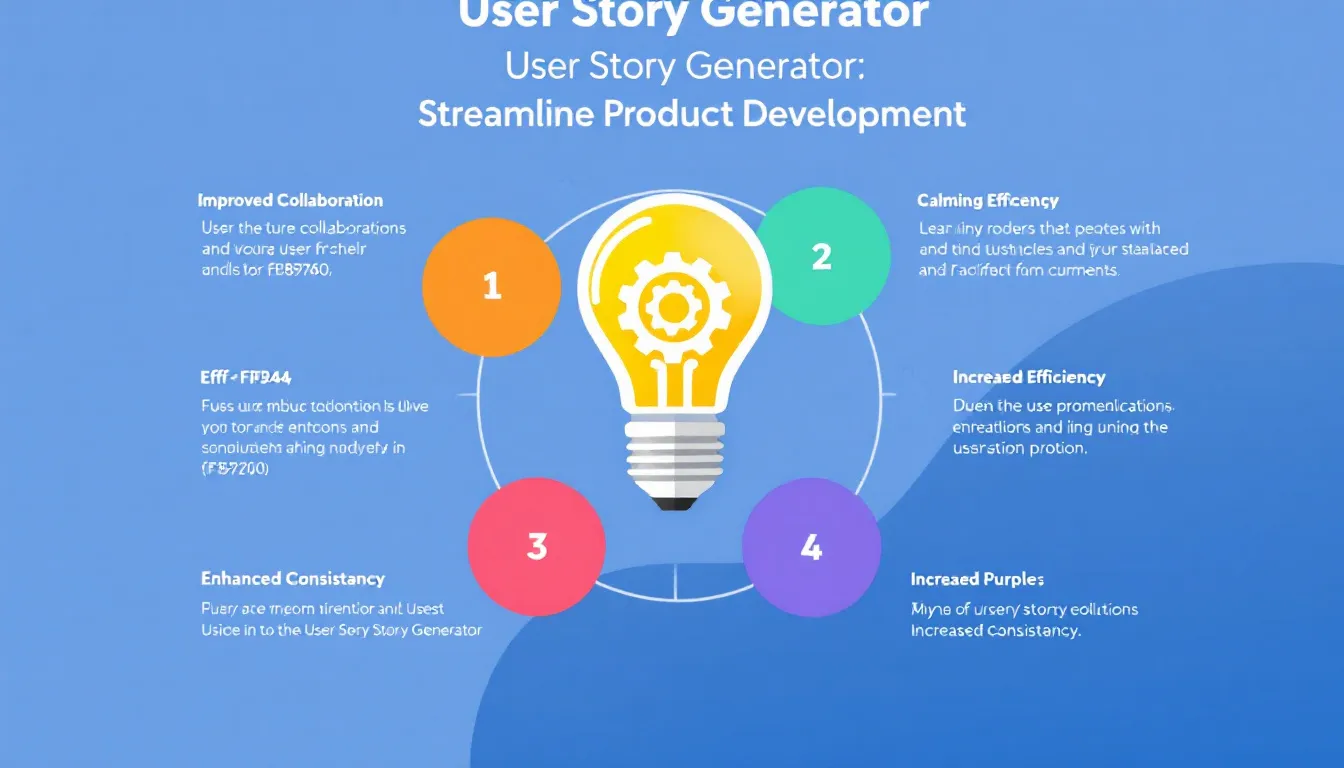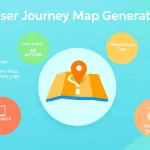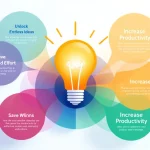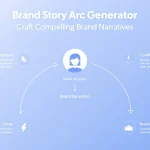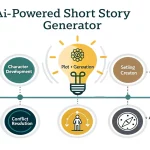Is this tool helpful?
How to Use the User Story Generator Tool Effectively
Follow these steps to get the most accurate and useful user stories tailored to your product and users:
-
Enter Your Product Name: Fill in the product’s name with something specific yet clear. For example:
- Online Learning Platform
- Smart Inventory Tracker
-
Provide a Detailed Product Description: Describe your product’s features and purpose thoroughly. For example:
- An app that offers live tutoring sessions, progress tracking, and interactive quizzes for students across various subjects.
- A system that monitors stock levels in real-time and automates reorder processes to reduce shortages and overstocks.
-
List Different User Types: Identify the key users interacting with your product, separated by commas. For example:
- Teachers, Students, School Administrators
- Warehouse Staff, Supply Chain Managers, Sales Representatives
-
Define Strategic Goals (Optional): If you have specific product objectives, add them here to align the stories with your vision. For example:
- Improve student engagement, Increase tutoring session attendance, Expand course catalog
- Reduce inventory errors, Speed up order processing, Enhance supplier communication
- Generate User Stories: Click “Generate User Stories” to let the tool create detailed user-focused narratives based on your input. These stories reflect real user needs and product functionality.
- Review and Copy Results: Examine the generated user stories carefully. Use the “Copy to Clipboard” option to save and use the stories directly in your product planning, development processes, or team discussions.
Providing clear and detailed input improves the relevance and quality of the generated user stories. Accurate data helps the tool tailor stories that mirror your product’s unique requirements and user base.
What is the User Story Generator Tool and How Does It Help You?
The User Story Generator Tool automatically creates precise, user-oriented product development narratives. User stories are essential in agile development, offering clear insight into what end-users want to achieve and why. This tool simplifies generating these stories by guiding you through critical input fields and producing ready-to-use narratives that improve communication between product managers, developers, and stakeholders.
By using this tool, you gain:
- Clear, Consistent User Stories: Every story follows a structured format to improve understanding across teams.
- Efficient Story Creation: Reduce the hours typically spent drafting and editing user stories.
- Comprehensive Coverage: Address diverse user needs through multiple user types and strategic goals.
- Alignment With Business Objectives: Connect user stories to your product’s strategic aims, ensuring relevance and impact.
- Enhanced Collaboration: Use generated stories as a foundation for team discussions and planning sessions.
Practical Usage of the User Story Generator Tool
This tool is ideal for product managers, developers, and anyone involved in product design who needs to create well-structured and meaningful user stories quickly. Instead of manually brainstorming or trying to formalize vague requirements, you input key product details and let the system generate narratives that define:
- Who the users are
- What they want to do with your product
- Why accomplishing certain actions benefits them
You can then use the generated user stories to:
- Guide Development Backlogs: Prioritize features around clear user needs.
- Shape Acceptance Criteria: Define when a feature fulfills its intended user benefit.
- Facilitate Agile Planning: Provide lightweight, user-centered work items for iterative sprints.
- Drive Stakeholder Communication: Align product vision and user expectations through shared narratives.
Example User Stories Generated by the Tool
- “As a warehouse manager, I want to receive automatic alerts when stock drops below threshold so that I can reorder supplies on time.”
- “As a student, I want to access interactive lesson materials on my tablet so that I can study flexibly outside the classroom.”
- “As a sales representative, I want to generate customized reports based on client history so that I can tailor my pitches effectively.”
Key Benefits of Using the User Story Generator Tool in Your Development Process
1. Saves Time and Effort
Drafting user stories manually takes time and focus. This tool speeds up the process by automatically generating clear, actionable stories from your input, letting you allocate resources more efficiently.
2. Ensures Consistency Across Stories
Maintaining a uniform user story format improves clarity and readability. This tool guarantees that every story follows the recognized pattern, helping teams collaborate and share knowledge better.
3. Covers Diverse User Needs Completely
By prompting for multiple user types, the tool generates stories for a wide range of users, making sure you don’t miss critical perspectives during product design and development.
4. Aligns User Stories with Business Strategy
Including your strategic goals ensures that user stories help meet larger company objectives, linking user value directly to business outcomes.
5. Encourages Team Collaboration and Empathy
Generated user stories open up discussions around real user needs, helping your team build empathy and gain deeper understanding essential for creating meaningful products.
Common Use Cases Across Industries
E-Commerce Platforms
- “As a shopper, I want to track my orders in real time so that I know exactly when my package arrives.”
- “As a seller, I want to set promotional discounts for holiday sales so that I can boost revenue during peak seasons.”
Healthcare Management Systems
- “As a nurse, I want to update patient charts digitally so that I reduce paperwork and improve accuracy.”
- “As a patient, I want to receive medication reminders on my phone so that I never miss a dose.”
Educational Technology
- “As a teacher, I want to assign homework digitally so that grading and feedback are streamlined.”
- “As a student, I want personalized study plans based on my progress so that I focus on weaker subjects.”
Fitness and Wellness Applications
- “As a fitness coach, I want to create workout schedules for clients that adapt to their performance.”
- “As a user, I want to log meals and track calorie intake so that I manage my nutrition better.”
Frequently Asked Questions (FAQs)
Q1: How many user stories should I generate for my product?
Start with 10 to 15 core stories that cover main features and primary user types. Expand this number as your product grows or as you identify more specific user needs during development.
Q2: Can I edit the generated user stories?
Yes. Treat generated user stories as a base. Customize, combine, or expand them to better fit your product specifics or user feedback.
Q3: How detailed should my product description be?
Provide as much relevant detail as possible about features, user benefits, and use cases. The more complete your input, the more accurate and useful the generated stories will be.
Important Disclaimer
The calculations, results, and content provided by our tools are not guaranteed to be accurate, complete, or reliable. Users are responsible for verifying and interpreting the results. Our content and tools may contain errors, biases, or inconsistencies. Do not enter personal data, sensitive information, or personally identifiable information in our web forms or tools. Such data entry violates our terms of service and may result in unauthorized disclosure to third parties. We reserve the right to save inputs and outputs from our tools for the purposes of error debugging, bias identification, and performance improvement. External companies providing AI models used in our tools may also save and process data in accordance with their own policies. By using our tools, you consent to this data collection and processing. We reserve the right to limit the usage of our tools based on current usability factors.
